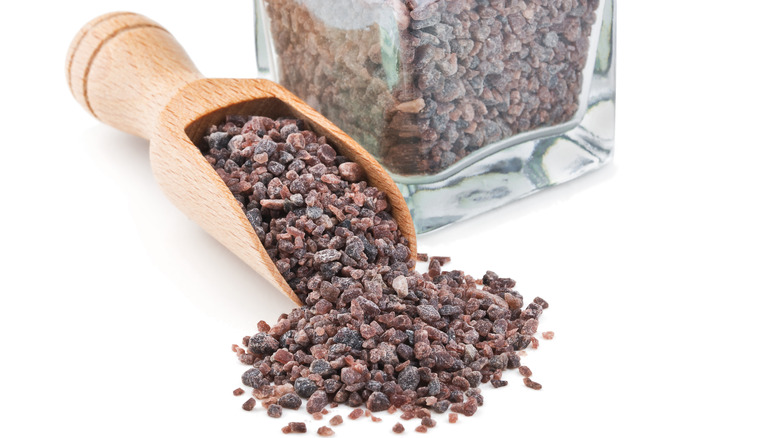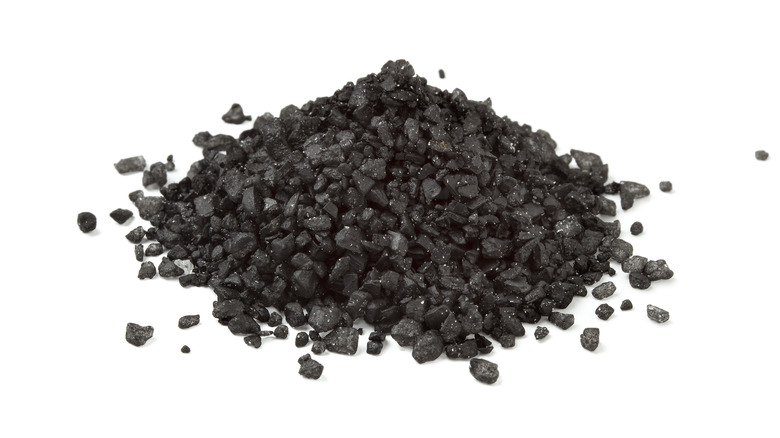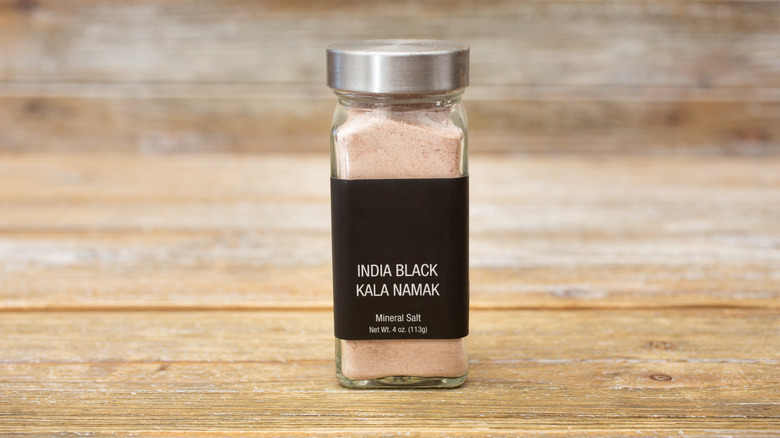The Egg-Flavored Black Salt That Can Level Up Your Vegan Breakfast
Vegans can have a tough row to hoe when it comes to eating — and this can be especially true when it comes to breakfast. Consider a life devoid of the perfect scrambled eggs, breakfast meats in general, and even pancakes, which generally contain eggs as an ingredient. Fortunately, the world has become significantly more kind to those who prefer a cruelty-free lifestyle. These days, those who reject animal-exploiting products have the option of selecting fare like vegan baked french toast, pulled oats, and the next wave of meat alternatives. There are also new seasonings to help vegans that want that smokey from-the-slaughterhouse flavor, without any animals being harmed in the making.
One of the newest in the string of vegan seasonings that can improve the breakfast experience. Better yet, it's not just for ethical eaters, but anyone who craves egg flavor without involving chickens. So what it is? None other than a black salt known as kala namak, colloquially known as Himalayan black salt.
What is kala namak?
Kala namak is called "black salt," though that name might be marginally erroneous. According to Koyuncu Salt, kala namak can appear black, but can also have a violet hue. When ground up, the salt loses all sense of blackness and actually becomes pink. Even so, color isn't really the point here — it's all about the flavor.
Koyuncu claims that the salt has a high sulfate and sulfide content, which could account for it bearing a flavor very similar to eggs. The salt is laden with umami, which is part of what provides the yolk taste.
As the Food Network notes, kala namak is a rock salt found in volcanic regions in the Himalayas, as the name "Himalayan black salt" implies. (It's also known as Indian black salt, as it shows up in the northern part of that country as well.) The region of origin is noteworthy because the seasoning has greatly influenced the food of the area. With an egg flavor built right in, Elephantastic Vegan suggests using kala namak in tofu scrambles or chickpea omelets. It can supplement other salts, or be used entirely on its own to increase and enhance the egg taste. If you're looking to try it, you may need to seek out an Indian market or order it through an international vendor, since it's not as likely to appear on standard grocery store shelves as regular table salt.
Other ways to use kala namak
If you're going to spend the money on kala namak, you're likely going to want to use it more often than just on the occasional morningtide meal. Fortunately, kala namak has been used in many ways for thousands of years, according to Koyuncu Salt. WebMD's Nourish site explains that it has holistic and therapeutic properties. It also might be healthier than standard salt, making it one of the best specialty salts available.
One of the ways that WebMD claims that kala namak has a positive impact on the body is through its antioxidant properties. Antioxidants fight off free radicals, according to Healthline, which are linked to cancer, diabetes, and heart disease. Kala namak also has reasonably low sodium levels. While your body does need some sodium, per MedlinePlus, too much of it can increase blood pressure and cause fluid retention which is dangerous for people with cirrhosis, heart disease, or kidney issues.
Using kala namak can provide a healthier seasoning alternative to those who want more flavor, but need to keep their sodium levels to a minimum, or anyone who'd prefer a bit less salt in their diet, and a new kind of taste experience. Nourish further explains that the black salt that is actually pink can reduce heartburn, assist in digestion, and limit muscle spasms. Ideal for many people, whether they ride the vegan highway or not.


